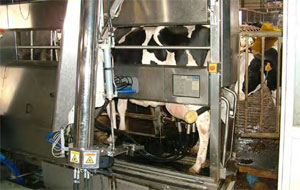Reza one of my PhD students has just finished his defense of his thesis titled “Optimization Methods in a Stochastic Production Environment“. I would like to congratulate Reza with his PhD title and for a good presentation at the defense. I have included the thesis summary below.
Summary
This dissertation with an interdisciplinary approach applies techniques from Operations Research and Statistics in order to develop models that support decisions regarding feeding and marketing of growing/finishing pigs. Stochastic dynamic programming is used as the main optimization tool to model decisions, and state space models are used as the primary statistical technique to describe the stochastic nature of the system. Based on data streams from online farm sensors and market prices, the state space model transforms data into information which is embedded into the decision models using Bayesian updating.
In the production of finishing pigs, feeding is an important operation and has a direct influence on the cost and the quality of the meat. Another important operation is the timing of marketing. It refers to a sequence of culling decisions until the production unit is empty. As a result, the profit of the production unit is highly dependent on the feeding cost and on good timing of marketing, i.e. decisions about feeding and marketing have a high impact on the profitability. Hence, it is relevant to consider decision models that optimize feeding and marketing decisions. This dissertation focuses specifically on three challenges. 1) Marketing and feeding decisions could be optimized simultaneously. 2) Fluctuations in the pork, feed, and piglet prices may have an impact on the optimal marketing policy. 3) Cross-level constraints implied by considering decisions at different levels such as animal, pen, section, and herd may affect the marketing policy.
Besides an introduction, this dissertation consists of three papers. In the first paper, feeding and marketing decisions are taken into account simultaneously. Since the choice of feed-mix affects the pigs’ growth, a specific feeding strategy has an impact on the marketing policy. That is, economic optimization of feeding and marketing decisions is interrelated and requires simultaneous analysis. It is therefore relevant to combine these decisions in the same model. In the second paper, marketing decisions are considered under fluctuating pork, feed, and piglet prices. Since the reward of marketing a pig depends on the pork, piglet, and feed prices, weekly fluctuations in these prices may have an impact on the farmer’s decision on when to market the pigs and buy new piglets or feed stock for the farm. Hence, it is relevant to model stochastic market prices instead of assuming deterministic prices in the model. Finally, in the third paper, marketing decisions are considered at different levels simultaneously. The paper considers the challenge of integrating decisions at animal, pen, section, and herd level. That is, decisions at one level (e.g. animal or pen) may influence decisions at other levels (e.g. section or herd). An example could be that delivery to the abattoir must be coordinated with marketing at pen level and termination of a whole section at section level.


